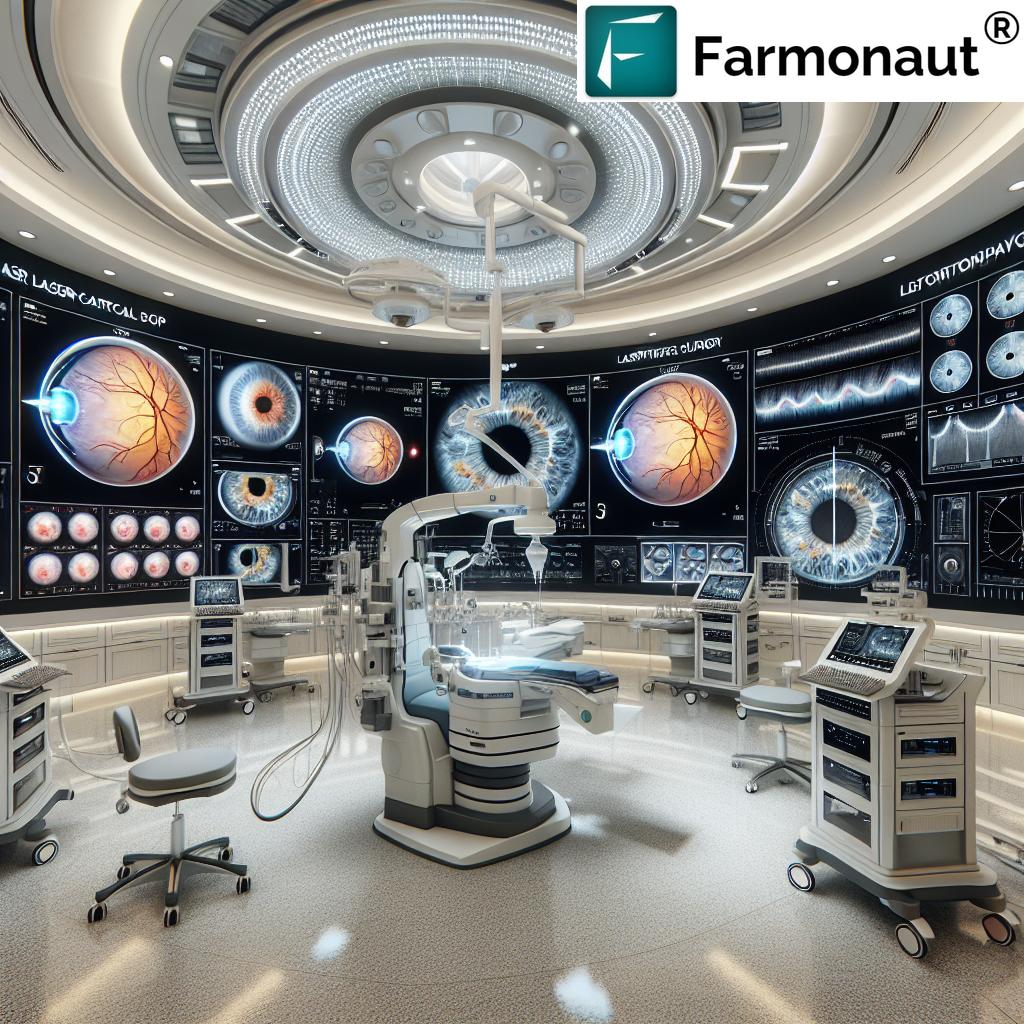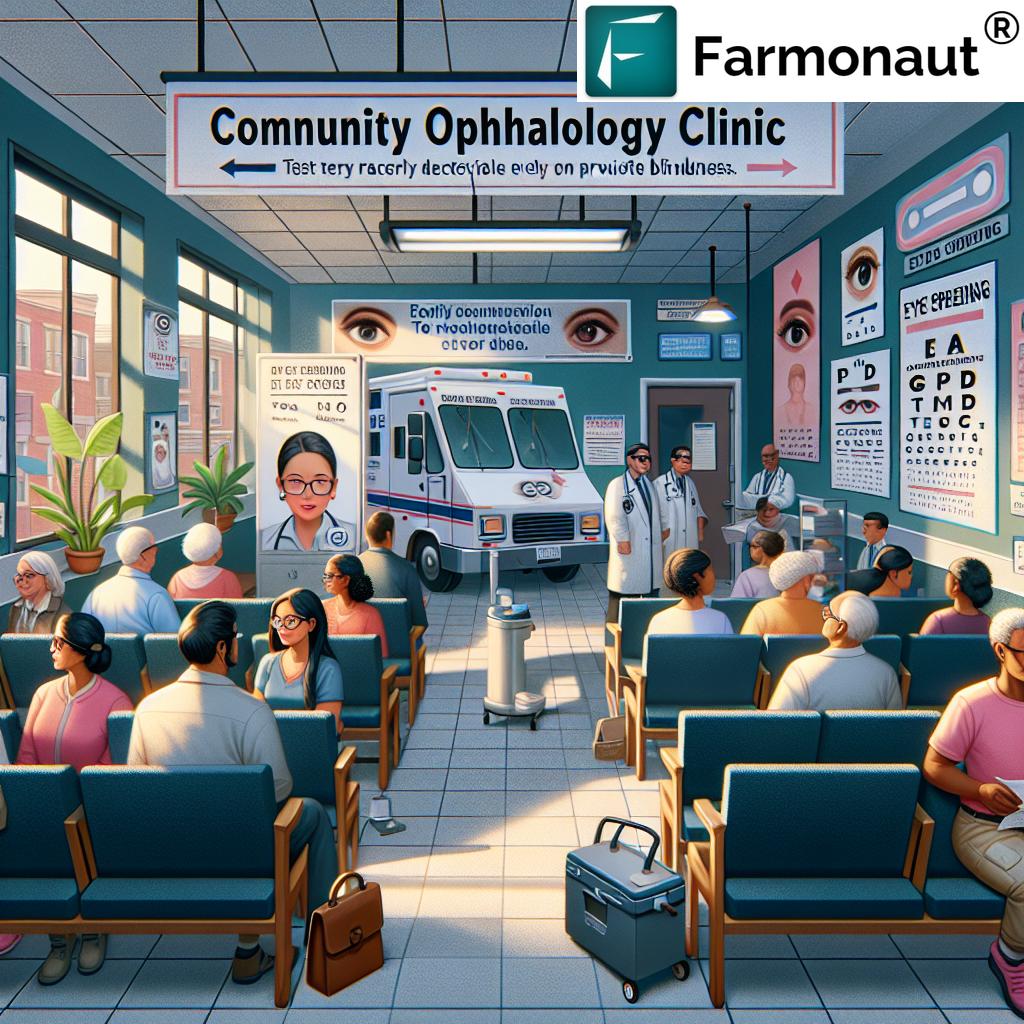Revolutionizing Eye Care: Innovative Laser Cataract Surgery Techniques Transform Vision Health in New York
In the bustling metropolis of New York, a quiet revolution in eye care is unfolding, transforming the landscape of vision health and setting new standards for ophthalmology worldwide. At the heart of this groundbreaking movement lies the innovative laser cataract surgery techniques that are not only restoring sight but also redefining the very essence of eye care. As we delve into this remarkable journey, we’ll explore how these advancements are shaping the future of ophthalmology and bringing hope to millions.

“The laserphaco probe invention revolutionized cataract surgery, potentially benefiting millions of patients worldwide.”
As we embark on this exploration of revolutionary eye care techniques, it’s crucial to understand the profound impact these innovations have on global vision health. The laser cataract surgery techniques being pioneered in New York are not just medical procedures; they represent a paradigm shift in how we approach eye health and the treatment of preventable blindness.
The Dawn of a New Era in Ophthalmology
The field of ophthalmology has witnessed remarkable advancements over the years, but few have been as transformative as the introduction of laser cataract surgery. This innovative eye surgery technique has revolutionized the way we treat one of the most common causes of vision loss worldwide. In New York, at the forefront of this medical revolution, ophthalmologists and laser scientists are working tirelessly to refine and perfect these procedures, ensuring that more patients than ever before can benefit from these sight-saving innovations.
At the heart of this revolution is the laserphaco probe, a groundbreaking invention that has transformed cataract removal. This device, developed through years of meticulous research and dedication, exemplifies the power of innovation in medicine. By harnessing the precision of laser technology, surgeons can now perform cataract removals with unprecedented accuracy and minimal invasiveness, leading to better outcomes and faster recovery times for patients.
Community Ophthalmology: A Vision for Inclusive Eye Care
While technological advancements are crucial, the true measure of progress in eye care lies in its accessibility. This is where the concept of community ophthalmology comes into play, a discipline that aims to bridge the gap between cutting-edge medical technology and underserved populations. In New York, this approach is taking root, with initiatives designed to bring eye care for underserved populations to the forefront of public health efforts.
Community ophthalmology programs in New York are focusing on early detection of eye conditions, a critical factor in preventing blindness. By training volunteers and conducting regular screenings in communities across the city, these programs are ensuring that vision problems are caught and treated early, significantly reducing the incidence of preventable blindness.
The Role of Telemedicine in Ophthalmology
In our rapidly digitalizing world, telemedicine is playing an increasingly vital role in healthcare delivery, and ophthalmology is no exception. Telemedicine in ophthalmology is revolutionizing how we approach eye care, especially for those in remote or underserved areas. In New York, ophthalmologists are leveraging this technology to extend their reach beyond the confines of traditional clinical settings.
Through telemedicine platforms, patients can now receive initial consultations, follow-up care, and even some diagnostic services remotely. This not only improves access to eye care but also ensures that patients receive timely interventions, crucial in preventing the progression of eye diseases. The integration of telemedicine into ophthalmology practices in New York is setting a new standard for patient care, one that prioritizes accessibility and continuity of treatment.
Breakthrough in Cataract Removal: The Laserphaco Revolution
The breakthrough in cataract removal brought about by the laserphaco probe cannot be overstated. This innovative device, developed through years of ophthalmology research advancements, has transformed what was once a complex and risky procedure into a precise, efficient, and highly successful operation.
In New York, where the pace of medical innovation matches the city’s energy, the adoption of the laserphaco technique has been swift and impactful. Patients who once faced uncertain outcomes and lengthy recovery periods are now experiencing faster healing times and better visual outcomes. The precision of the laser allows surgeons to remove cataracts with minimal damage to surrounding tissue, resulting in clearer vision and reduced risk of complications.
| Year | Innovation | Inventor/Pioneer | Impact on Vision Health |
|---|---|---|---|
| 1985 | Laserphaco Probe | Dr. Patricia E. Bath | Revolutionized cataract surgery, improving outcomes for millions |
| 1990s | Community Ophthalmology | Dr. Patricia E. Bath | Improved access to eye care for underserved populations |
| 2000s | Telemedicine in Ophthalmology | Various Pioneers | Extended reach of eye care services to remote areas |
| 2010s | AI in Retinal Disease Detection | Multiple Research Teams | Enhanced early detection of eye diseases |
Vision Care as a Human Right: A New York Initiative
In the heart of New York, a powerful movement is gaining momentum: the recognition of vision care as a human right. This initiative, inspired by the tireless work of pioneers in the field, is reshaping how we think about eye health and its place in society. By framing access to quality eye care as a fundamental right, advocates are pushing for policy changes and increased funding for eye health programs.
This approach is particularly crucial in addressing the disparities in eye health outcomes among different communities. In New York, where diverse populations coexist, ensuring equitable access to eye care is not just a medical necessity but a social imperative. The initiative is driving efforts to establish more community eye clinics, increase funding for eye health research, and implement comprehensive eye health education programs in schools and communities.
The Impact of Early Detection in Eye Care
One of the most significant advancements in modern ophthalmology is the emphasis on early detection of eye conditions. In New York, this approach is saving sight and transforming lives. Through a combination of innovative screening technologies and community outreach programs, ophthalmologists are detecting eye problems at their earliest stages, when they are most treatable.
The impact of early detection cannot be overstated. Conditions like glaucoma, diabetic retinopathy, and age-related macular degeneration, which can lead to irreversible vision loss if left untreated, are now being caught and managed before they cause significant damage. This proactive approach is not only preserving vision but also reducing the overall burden on the healthcare system by preventing the need for more complex and costly interventions down the line.
Innovative Eye Surgery Techniques: Beyond Cataract Removal
While laser cataract surgery has been a game-changer, it’s just one of many innovative eye surgery techniques being developed and refined in New York. From advanced corneal transplantation methods to minimally invasive glaucoma surgeries, the field of ophthalmology is expanding its arsenal of tools to combat a wide range of eye conditions.
These new techniques are characterized by their precision, effectiveness, and focus on minimizing patient discomfort and recovery time. For instance, the use of femtosecond lasers in corneal transplantation has significantly improved the accuracy of the procedure, leading to better outcomes and faster healing. Similarly, micro-invasive glaucoma surgeries are providing new hope for patients with this sight-threatening condition, offering effective pressure reduction with fewer risks than traditional surgeries.
“Patricia E. Bath became the first woman chair of an ophthalmology department in the United States, breaking barriers in academia.”
The Role of Academia in Advancing Eye Care
The advancements in eye care we’re witnessing today are deeply rooted in academic research and innovation. New York’s prestigious medical schools and research institutes are at the forefront of ophthalmology research advancements, pushing the boundaries of what’s possible in eye care. From developing new surgical techniques to uncovering the genetic basis of eye diseases, these institutions are shaping the future of ophthalmology.
The collaboration between academic researchers and practicing clinicians is particularly fruitful in New York. This synergy allows for the rapid translation of laboratory discoveries into clinical applications, ensuring that patients benefit from the latest advancements in eye care as quickly as possible. Moreover, these academic centers play a crucial role in training the next generation of ophthalmologists, ensuring that the field continues to evolve and innovate.
Addressing Preventable Blindness: A Global Perspective
While New York is at the forefront of many eye care innovations, the fight against preventable blindness is a global challenge. The techniques and approaches being developed in New York are having a ripple effect worldwide, contributing to the global effort to eliminate avoidable blindness.
Organizations based in New York are partnering with international agencies to bring innovative eye care solutions to developing countries. These initiatives range from training local healthcare workers in advanced eye care techniques to implementing telemedicine programs that connect remote communities with expert ophthalmologists. By sharing knowledge and resources, New York’s ophthalmology community is playing a crucial role in the global fight against blindness.
The Future of Eye Care: Personalized Medicine and AI
As we look to the future of eye care, two trends are emerging as game-changers: personalized medicine and artificial intelligence (AI). In New York, researchers are exploring how genetic information can be used to tailor eye treatments to individual patients, increasing effectiveness and reducing side effects.
AI is also making significant inroads in ophthalmology. Machine learning algorithms are being developed to analyze retinal images, detect early signs of eye diseases, and even predict the progression of conditions like glaucoma. These AI tools are not replacing ophthalmologists but rather augmenting their capabilities, allowing for more accurate diagnoses and more effective treatment plans.

Conclusion: A Bright Future for Vision Health
As we’ve explored throughout this article, the field of ophthalmology is undergoing a remarkable transformation, with New York at the epicenter of many of these changes. From innovative laser cataract surgery techniques to the expansion of community ophthalmology programs, the advances we’re seeing today are setting the stage for a future where preventable blindness is a thing of the past.
The journey towards this future is not without its challenges. Issues of access, affordability, and equity in eye care persist. However, the dedication of ophthalmologists, researchers, and advocates in New York and beyond gives us reason for optimism. By continuing to innovate, collaborate, and prioritize vision care as a fundamental human right, we can look forward to a world where clear, healthy vision is accessible to all.
FAQs
- What is laser cataract surgery?
Laser cataract surgery is an advanced technique that uses a femtosecond laser to perform some of the steps traditionally done by hand in cataract removal. It offers increased precision and can lead to better visual outcomes. - How does community ophthalmology benefit underserved populations?
Community ophthalmology brings eye care services directly to underserved areas, conducting screenings, providing education, and offering basic treatments. This approach helps detect eye problems early and improves access to care for those who might otherwise not receive it. - What role does telemedicine play in modern ophthalmology?
Telemedicine in ophthalmology allows for remote consultations, follow-ups, and even some diagnostic services. It’s particularly valuable for patients in rural or underserved areas, improving access to specialist care. - How has the laserphaco probe revolutionized cataract surgery?
The laserphaco probe allows for more precise and less invasive cataract removal. It uses laser energy to break up the cataract, making it easier to remove and potentially reducing complications. - Why is early detection important in eye care?
Early detection of eye conditions often leads to better treatment outcomes. Many eye diseases, if caught early, can be managed effectively to prevent vision loss or slow disease progression.
As we conclude our exploration of the revolutionary changes in eye care, it’s clear that the future of vision health is bright, especially in New York. The innovative techniques and approaches we’ve discussed are not just improving outcomes for individual patients; they’re reshaping the entire landscape of ophthalmology. From the precision of laser cataract surgery to the inclusivity of community ophthalmology programs, these advancements are bringing us closer to a world where clear vision is a reality for all.
We encourage readers to stay informed about these exciting developments in eye care and to prioritize their vision health. Regular eye check-ups and early intervention can make a significant difference in maintaining healthy vision throughout life. As New York continues to lead the way in ophthalmology innovation, we can all look forward to a future where the gift of sight is protected and preserved for generations to come.



